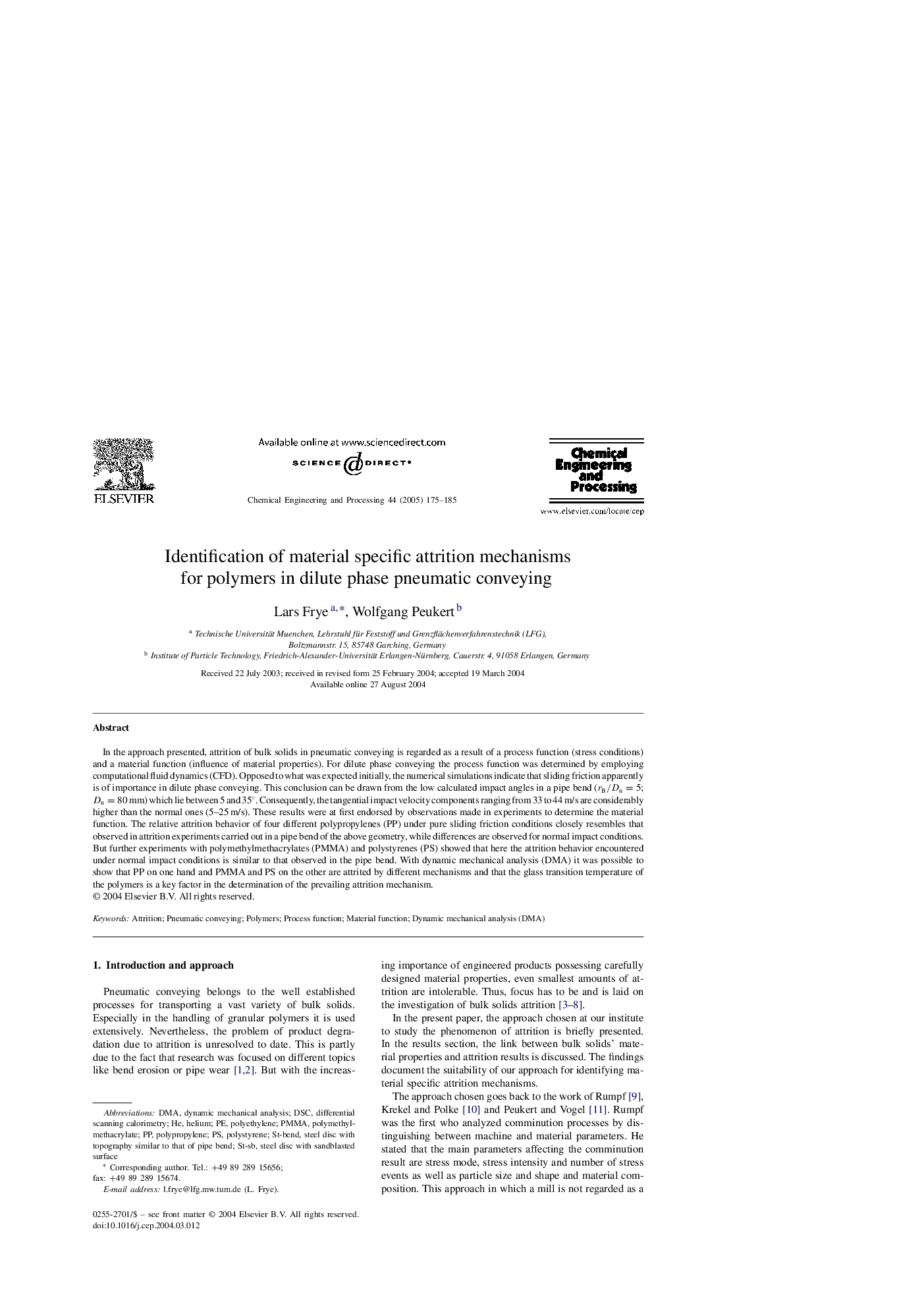| Article ID | Journal | Published Year | Pages | File Type |
|---|---|---|---|---|
| 10397057 | Chemical Engineering and Processing: Process Intensification | 2005 | 11 Pages |
Abstract
In the approach presented, attrition of bulk solids in pneumatic conveying is regarded as a result of a process function (stress conditions) and a material function (influence of material properties). For dilute phase conveying the process function was determined by employing computational fluid dynamics (CFD). Opposed to what was expected initially, the numerical simulations indicate that sliding friction apparently is of importance in dilute phase conveying. This conclusion can be drawn from the low calculated impact angles in a pipe bend (rB/Dn=5; Dn=80 mm) which lie between 5 and 35°. Consequently, the tangential impact velocity components ranging from 33 to 44 m/s are considerably higher than the normal ones (5-25 m/s). These results were at first endorsed by observations made in experiments to determine the material function. The relative attrition behavior of four different polypropylenes (PP) under pure sliding friction conditions closely resembles that observed in attrition experiments carried out in a pipe bend of the above geometry, while differences are observed for normal impact conditions. But further experiments with polymethylmethacrylates (PMMA) and polystyrenes (PS) showed that here the attrition behavior encountered under normal impact conditions is similar to that observed in the pipe bend. With dynamic mechanical analysis (DMA) it was possible to show that PP on one hand and PMMA and PS on the other are attrited by different mechanisms and that the glass transition temperature of the polymers is a key factor in the determination of the prevailing attrition mechanism.
Keywords
Related Topics
Physical Sciences and Engineering
Chemical Engineering
Process Chemistry and Technology
Authors
Lars Frye, Wolfgang Peukert,
